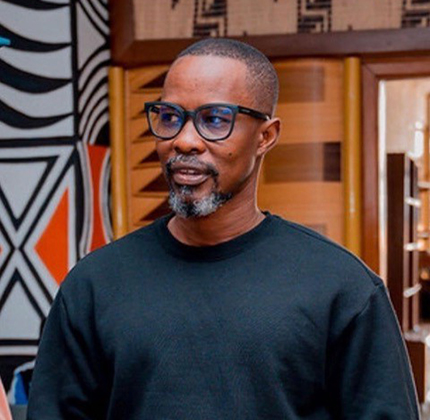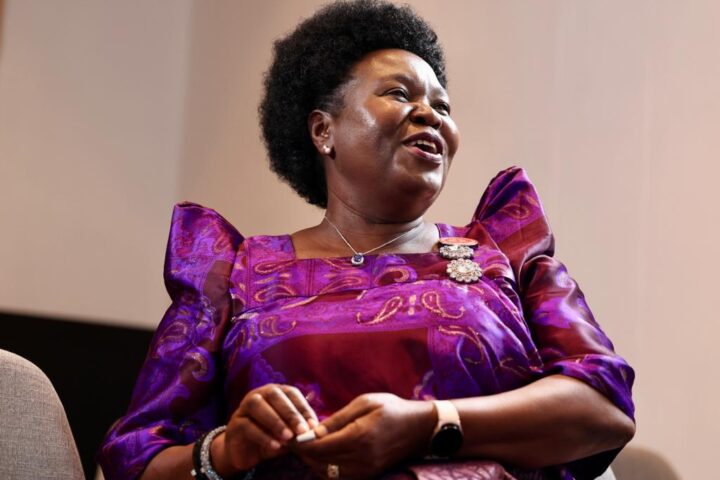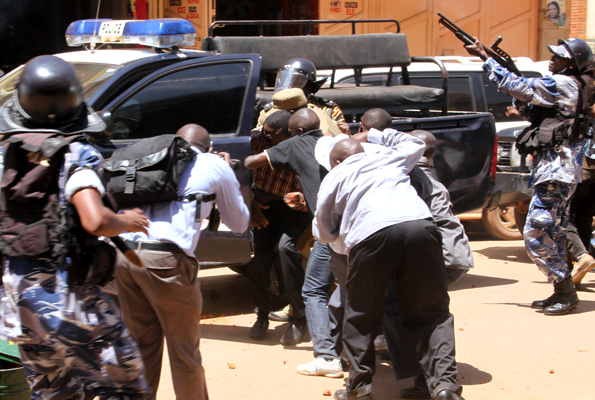It is possible that the Chinese will take the contract for the “beautification” of Centenary Park. Until recently the park, a former distended part of the old Kampala Golf Course, was simply a hangout spot, an entertainment hub of the upper district of the city that pulsated northwards along the spine of the golf course toward Wandegeya and Kamwokya. Simply known as “CP” in the slang used by college students who patronize the street separating Centenary Park from the nearby Oasis and Garden City malls, the place featured restaurants, bars, a gym and shops. In fact Centenary Park has never been a park. Throughout the 80’s it was the neglected part of the golf course which falling on bad times maintained a smaller patch of its property. The rest was overgrown bush and sewage.
Once upon a time this area was giving the city a “bad name” or like Kampala residents may say it was “not serious”. By this they mean ruffians and lumpens would hang around its dirty greens and rob pedestrians crossing through here to get to other parts of the city. The green valley of which the Golf Course is part sits at the bottom of Kololo Hill, the home of diplomats and the rich and stretched from Mulago, Kampala’s main hospital long a road named Kitante road and on the spine of Nakasero Hill which is the city residence of Ugandan presidents.
Centenary Park is different from say the Pan African park near Clock Tower across the city on Entebbe Road because of its relationship with the more bourgeoisie residents on the hill tops that surrounded it. Its fate as a “green belt” was however sealed a long time ago.
In the early 2000’s a section of the golf course made way for Garden City mall amid loud baying by environmental groups who made a strong case about the need to preserve green spaces, playgrounds and meeting spots in the city.
The rest is history.
Hotels, office buildings, private hospitals and malls have today swallowed most public land. The city’s tallest hotel complex, the “soon” to be opened Kampala Hilton sits on land formerly set aside for the old national television and radio. The new offices of the Uganda Broadcasting Corporation now neighbor an upcoming Kingdom Mall just above Centenary Park. The new mall was once home to one of Kampala’s most celebrated schools, Shimoni Demonstration primary school.
When the metropolitan authority for Kampala started knocking down buildings at Centenary Park on the pre-text that the city needed “green spaces” it was therefore an anticlimax. Kampala’s growth may be path dependant in the sense that many of the world’s cities grew like a cancer to which planners then responded with all sorts of chemotherapy and other remedies to take control and shape what was a disease into something good. Or manageable.
What is interesting about the Centenary Park saga, which has cast the already glaring spotlight on the city’s administrator “Samurai Jenny” or Jennifer Musisi, is that it tells a Ugandan story of how development is happening. On the surface CP is simply an attempt to reclaim the city from developers gone amok. Just weeks earlier Samurai Jenny had knocked down a would-be car showroom that was linked to an investment allegedly made by one of President Yoweri Museveni’s brother’s known hereabouts as Toyota (even if he had intended the show room to be for Ford Motors, one person joked) Ms Musisi has been embraced as the lightening rod of the city’s disaffected residents long hostage to the cancer of land grabs. Even if she is an executive appointee (and indeed it was the President who sparked the so-called “land bonanza”) her actions of providing order to the chaos has been well received.
In fact politically Samurai Jenny is also new because she is the most fresh faced of a retinue of NRM’s powerpuff girls, women administrators like Julia Ssebutinde, Specioza Kazibwe, Allen Kagina, and less power but more puff teammates like Janat Mukwaya, Syda Bhumba and others. It has been thought that the reason they have been effective is that they tended to be more capable ( and more controllable) allies outside President Museveni’s inner cycle or largely “male” comrades.
And unlike the men they all tended not to be just head turners but page turners too, bookish and austere like old style bureaucrats.
But the extent to which the Kampala Capital City Authority under Ms Musisi is a game changer depends very much on something perhaps less acknowledged publicly.
When the bulldozers went to work the Minister of Trade Ms Amelia Kyambadde rushed to halt the destruction. Amelia was until recently the powerful and longest serving Presidential Private Secretary. The online community cheered what promised to be a cat fight between the Presidents “women” as they saw it. On talk shows later it was revealed (as it was bound to be) that she (Ms Kyambadde) had some vested interests in Centenary Park. More is yet to be revealed.
Development in Kampala is a very incestuous affair you see. And with each turn of policy often reveals not the tension say between environmentalists and progressive elements in the city but rather the competition within the establishment between the ruling families. Even if the lifting of the veil on who owns the major developments (and importantly how they made their money) might be relevant to policy and its effectiveness rarely does it make it to the public domain, who the men and women, behind the curtain, are to whom we owe both the pleasure of new shopping and office space, and the offence of turning the city into a concrete jungle. Who owns Garden City, Kingdom Mall, Nakumatt Oasis, Forest Mall and the rest of Kampala’s prime properties remains sequestered in private conversation.
Even with an aggressive media little is ever uncovered.
It is no wonder that public policy is rarely ever a proper conversation but a series of policy options that are really pre-owned or competed for properties of forces who often hide in plain sight. One interesting aspect to Kampala’s growth over the years has been migrant investment firstly with the return of Asians (kicked out by Idi Amin in 1972) and now the advent of the Chinese. The latter are now the preferred contractors of Kampala’s revival snagging most major building projects often amidst allegations of bribe making. Perhaps a negative theory of development sits atop most of these events that is worth unpacking and should be continued here.
What is clear is that the wealth of the wealthy in Kampala is a statement of their relationship to politics and what appears as investment by the indigenous entrepreneurial classes is really a statement of the going rate or commission earned from negotiating investment by external capital or more basically the skimming off of the taxpayer.
However for this to be properly contextualized there has to be a telling of the story from the bottom up not as a discussion of policy but also as a conversation about politics and the relationships that form its tapestry especially at the center.
Over to you ( for now)










